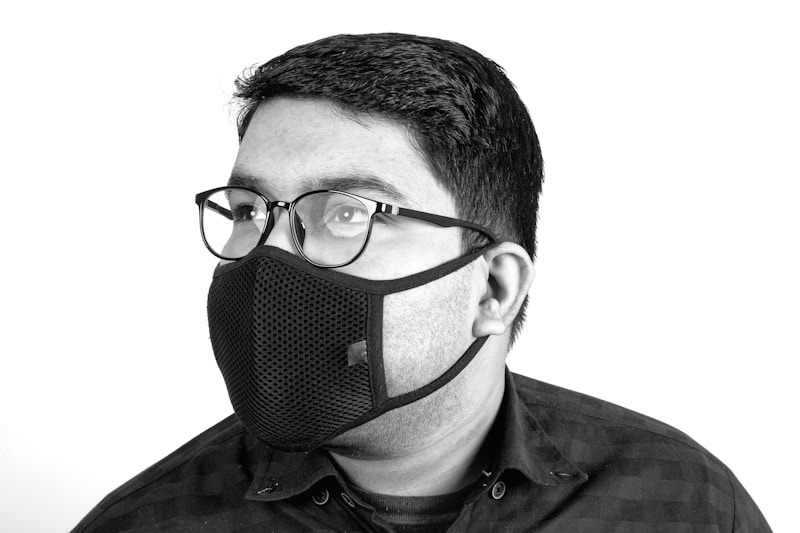9 Questions
What is asthma?
What are the symptoms of asthma?
What causes asthma?
What is the treatment for asthma?
What is the hygiene hypothesis?
What is the classification of asthma based on?
What is brittle asthma?
What are the prevention measures for asthma?
What is the cost per asthma-related hospital stay in the United States for children?
Summary
Asthma: A Summary
-
Asthma is a long-term inflammatory disease of the airways of the lungs, characterized by variable and recurring symptoms, reversible airflow obstruction, and easily triggered bronchospasms.
-
Symptoms include episodes of wheezing, coughing, chest tightness, and shortness of breath, which may occur a few times a day or a few times per week. Asthma symptoms may become worse at night or with exercise.
-
Asthma is caused by a combination of genetic and environmental factors, including exposure to air pollution and allergens. Diagnosis is usually based on the pattern of symptoms, response to therapy over time, and spirometry lung function testing.
-
There is no known cure for asthma, but it can be controlled with the use of inhaled corticosteroids, long-acting beta agonists (LABA), or antileukotriene agents. Treatment of rapidly worsening symptoms is usually with an inhaled short-acting beta-2 agonist such as salbutamol and corticosteroids taken by mouth.
-
In 2019 asthma affected approximately 262 million people and caused approximately 461,000 deaths. Most of the deaths occurred in the developing world. Asthma often begins in childhood, and the rates have increased significantly since the 1960s.
-
Asthma is associated with a number of other health conditions, including gastroesophageal reflux disease (GERD), rhinosinusitis, and obstructive sleep apnea. Psychological disorders are also more common, with anxiety disorders occurring in between 16 and 52% and mood disorders in 14–41%.
-
Asthma is caused by a combination of complex and incompletely understood environmental and genetic interactions. Family history is a risk factor for asthma, with many different genes being implicated. Exposure to bacterial endotoxin in early childhood may prevent the development of asthma, but exposure at an older age may provoke bronchoconstriction.
-
Asthma exacerbations can be triggered by a number of factors, including dust, animal dander, cockroach allergens, mold, viral and bacterial infections, and psychological stress.
-
Asthma is the result of chronic inflammation of the conducting zone of the airways, which subsequently results in increased contractability of the surrounding smooth muscles. There may also be involvement of other components of the immune system, including cytokines, chemokines, histamine, and leukotrienes among others.
-
There is currently no precise test for the diagnosis of asthma, which is typically based on the pattern of symptoms and response to therapy over time. Spirometry is recommended to aid in diagnosis and management.
-
Treatment of asthma may involve the use of inhaled corticosteroids, long-acting beta agonists (LABA), or antileukotriene agents. Treatment of rapidly worsening symptoms is usually with an inhaled short-acting beta-2 agonist such as salbutamol and corticosteroids taken by mouth.
-
Efforts to decrease dust mites have been found to be ineffective on symptoms in sensitized subjects. Weak evidence suggests that efforts to decrease mold by repairing buildings may help improve asthma symptoms in adults.
-
The hygiene hypothesis attempts to explain the increased rates of asthma worldwide as a direct and unintended result of reduced exposure, during childhood, to non-pathogenic bacteria and viruses. There is evidence supporting the hygiene hypothesis, including lower rates of asthma on farms and in householdsAsthma: Symptoms, Classification, Exacerbations, and Management
-
Asthma is clinically classified based on the frequency of symptoms, FEV1, and peak expiratory flow rate. It can also be classified as atopic or non-atopic based on the presence or absence of allergen-induced symptoms.
-
Airway obstruction in asthma is usually reversible, but if left untreated, chronic inflammation from asthma can lead to irreversible obstruction due to airway remodeling.
-
An acute asthma exacerbation is commonly known as an asthma attack, with symptoms including shortness of breath, wheezing, and chest tightness. Severe cases may cause chest pain, blue skin color, and impaired air motion.
-
Asthma exacerbations are classified as mild, moderate, or severe based on peak expiratory flow rates.
-
Acute severe asthma, also known as status asthmaticus, is an acute exacerbation of asthma that does not respond to standard treatments of bronchodilators and corticosteroids.
-
Brittle asthma is a type of asthma that is characterized by recurrent, severe attacks. Type 1 brittle asthma is a disease with wide peak flow variability, while type 2 brittle asthma is well-controlled asthma with sudden severe exacerbations.
-
Exercise-induced bronchoconstriction is common in professional athletes, and many cases of asthma are caused or worsened by workplace exposures.
-
Aspirin-exacerbated respiratory disease affects up to 9% of asthmatics and is characterized by asthma, nasal polyps, sinus disease, and respiratory reactions to aspirin and other NSAID medications.
-
Non-atopic asthma, also known as intrinsic or non-allergic, makes up between 10 and 33% of cases and has a negative skin test to common inhalant allergens.
-
Asthma can coexist with COPD and can occur as a complication of chronic asthma.
-
Prevention measures for asthma include decreasing risk factors such as tobacco smoke, air pollution, and the number of lower respiratory infections. Early pet exposure may be useful, and reducing or eliminating compounds known to trigger asthma at the workplace may be effective.
-
Treatment for asthma includes identifying and eliminating triggers, using bronchodilators for short-term relief, and using low-dose inhaled corticosteroids or alternative medications for mild persistent disease. In a moderate or severe exacerbation, corticosteroids by mouth are added to these treatments. Lifestyle modifications such as avoiding triggers, quitting smoking, and exercising are also recommended.
-
Cognitive behavioral therapy may improve quality of life, asthma control, and anxiety levels in people with asthma. Providing educational sessions and shared decision-making may also be effective in managing asthma.Key Points on Asthma
-
Stopping long-acting beta2-agonists (LABA) and stepping down to inhaled corticosteroids (ICS)-only therapy may increase the risk of asthma exacerbations that require treatment with corticosteroids by mouth.
-
Medications are typically provided as metered-dose inhalers (MDIs) in combination with an asthma spacer or as a dry powder inhaler. A nebulizer may also be used.
-
Long-term use of inhaled corticosteroids at conventional doses carries a minor risk of adverse effects. Risks include thrush, the development of cataracts, and a slightly slowed rate of growth.
-
Inflammation in the lungs can be estimated by the level of exhaled nitric oxide.
-
Evidence is insufficient to support the usage of vitamin C or vitamin E for controlling asthma. There is tentative support for use of vitamin C in exercise-induced bronchospasm. Fish oil dietary supplements (marine n-3 fatty acids) and reducing dietary sodium do not appear to help improve asthma control.
-
Rates of asthma have increased significantly between the 1960s and 2008 with it being recognized as a major public health problem since the 1970s.
-
From 2000 to 2010, the average cost per asthma-related hospital stay in the United States for children remained relatively stable at about $3,600.
-
Asthma was recognized in ancient Egypt and was treated by drinking an incense mixture known as kyphi. It was officially named as a specific respiratory problem by Hippocrates circa 450 BC.
-
Epinephrine was first referred to in the treatment of asthma in 1905. Oral corticosteroids began to be used for this condition in the 1950s while inhaled corticosteroids and selective short-acting beta-agonist came into wide use in the 1960s.
-
During the 1930s to 1950s, asthma was known as one of the "holy seven" psychosomatic illnesses.
-
In January 2021, an appeal court in France overturned a deportation order against a 40-year-old Bangladeshi man, who was a patient of asthma.
-
Asthma affects approximately 7% of the population of the United States and 5% of people in the United Kingdom.
-
In 2019, approximately 262 million people worldwide were affected by asthma and approximately 461,000 people died from the disease.
Description
Test your knowledge on asthma with our informative quiz! Learn about the symptoms, classifications, exacerbations, and management of this long-term inflammatory disease of the airways. Discover how genetic and environmental factors can trigger asthma, and how it can be controlled with medications and lifestyle modifications. Get insights into the latest research and historical perspectives on asthma, and learn about its association with other health conditions. From diagnosis to treatment, this quiz will cover everything you need to know about asthma.



